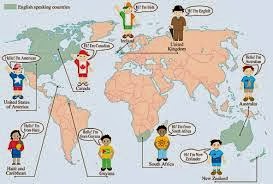COMPUTER ROOM
Now that you know about British newspapers, let's analyze the elements of newspaper articles.
There are certain elements that are common to almost all articles that you will read in the newspaper or find on the Internet:
• Headline (Heading)
The headline is the title of the news article. The headline should be short, does not include a lot of detail, and should catch the readers’ attentions. It is normally not a complete sentence, and tries to summarize the main idea or subject of the article. It is often printed in larger letters than the rest of the article, and the major words are capitalized.
• Byline
This line tells who is writing the article. It may also include the address of the author and the publication or news source for which he or she writes.
• Location
This is usually placed at the beginning of the article in bold print. If the city or location is well-known, the name can be written alone, but if the city is less famous, more information is included. For example, the byline of an article written in Atlanta, Georgia would read ‘Atlanta’ , while an article from Leary, Georgia would have to include the name of the state.
• Lead Paragraph(s)
The lead paragraph is found at the beginning of the article. The lead briefly answers the questions “who”, “what”, “when”, “why”, “where”, and “how”. The ‘skeleton’ of the story can be found here.
• Supporting Paragraph(s)
These are the paragraphs which follow the lead. They develop the ideas introduced by the lead, and give more information in the form of explanations, details, or quotes. In many newspapers, these paragraphs are found on subsequent pages.
Practice your headline writing with this game.
Take part in an interactive debate against an opponent arguing from the opposite point of view on a range of interesting topics. Listen to what they have to say before choosing your response from a list of possible alternatives. The judges will then vote on who they thought had they best argument, try hard and see if you can get the crowd on your side and win the debate.
Some colouring?








Comentarios